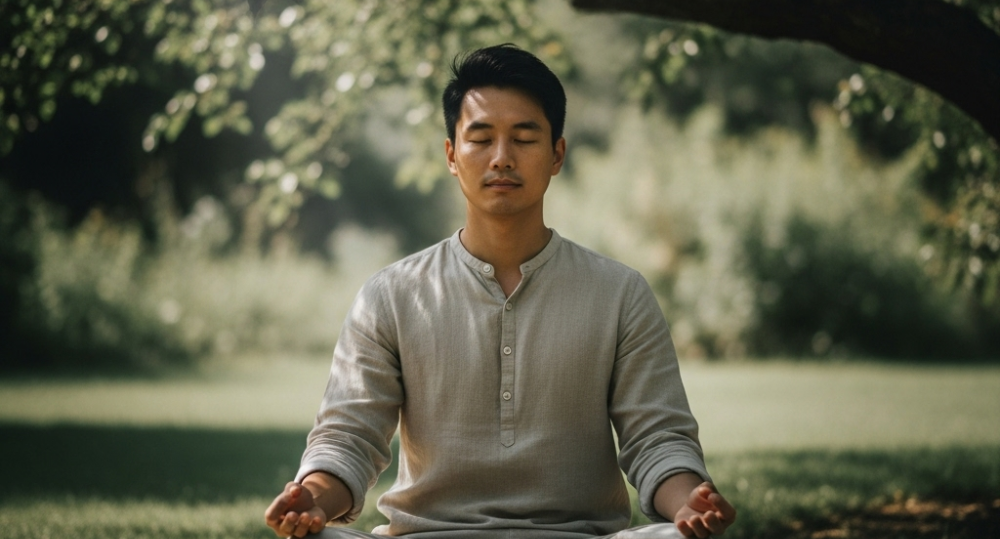
As a Road Ranger, you know the open road can be both a sanctuary and a minefield. It’s where freedom meets frustration, and where the unexpected is, well, expected. To truly master the journey, you need more than just a well-maintained vehicle and a good map. You need a set of core principles that guide your every mile. For The Road Ranger Guide, one of the most vital is Patience.
Today, we’re diving deep into this often overlooked, but profoundly powerful principle.
Why Patience Isn’t Just a Virtue—It’s a Survival Skill
Let’s be honest: the road tests your Patience daily. From gridlocked traffic that makes you question your life choices, to drivers who seem to have forgotten every rule of the road, to unexpected detours that throw your perfectly planned schedule into disarray, impatience is an easy default.
But for the Road Ranger, impatience isn’t just an annoyance; it’s a liability. When frustration boils over, it clouds judgment, increases reaction time, and makes you more prone to risky decisions. It turns a potential minor inconvenience into a major hazard.
Think of Patience as your mental suspension system. Just as your vehicle’s shocks absorb the bumps in the road, Patience allows you to absorb the shocks of traffic, rude drivers, and unforeseen delays without losing your cool. It keeps you centered, focused, and in control, no matter what external chaos unfolds around you.
The Science of Stress and the Power of the Breath
So, how do we cultivate this seemingly elusive quality, especially when we’re stuck in bumper-to-bumper traffic or dealing with a truly maddening situation? For many, the answer lies in understanding our own physiology and actively managing our stress response.
When stress hits – whether it’s the sudden brake lights ahead or the honking horn behind – our bodies naturally kick into “fight or flight” mode. Our heart rate increases, breathing becomes shallow, muscles tense, and our cognitive functions can be impaired. This is the opposite of the calm, clear-headed state we need behind the wheel.
This is where the power of conscious breathing comes in. It’s a direct, immediate, and free tool you have at your disposal, anytime, anywhere. By intentionally slowing down your breath and deepening it, you send a signal to your nervous system that you are safe, counteracting the stress response.
As a Road Ranger, I’ve found immense relief and improved Patience through simple breathing techniques. When I feel the tension rising – maybe someone just cut me off, or I’m facing an unexpected delay – I take a few deliberate, deep breaths. I inhale slowly through my nose, feeling my abdomen rise, hold for a moment, and then exhale even more slowly through my mouth, letting go of the tension with each breath. This isn’t just anecdotal; it’s rooted in the science of the vagus nerve and its role in regulating our parasympathetic nervous system, which is responsible for “rest and digest” rather than “fight or flight.”

Beyond the Breath: The Depth of Transcendental Meditation
For a more profound and sustained cultivation of patience and stress resilience, I’ve personally found Transcendental Meditation (TM) to be a game-changer. While breathing techniques are excellent for in-the-moment relief, TM offers a deeper, more pervasive sense of calm and clarity that extends into all aspects of life, including my time on the road.
TM is a simple, effortless mental technique practiced for 15-20 minutes twice a day, sitting comfortably with eyes closed. It doesn’t involve concentration, control of the mind, or trying to empty the mind. Instead, it allows the mind to settle inward, through quieter levels of thought, until it arrives at the most silent and peaceful level of awareness – a state of “restful alertness.”
The regular practice of TM has several benefits that directly impact a Road Ranger’s ability to be patient:
- Reduced Stress and Anxiety: Numerous scientific studies have shown that TM effectively reduces physiological and psychological stress. Less background stress means you have a higher threshold for dealing with new stressors on the road. The little things that used to bother you just don’t have the same impact.
- Improved Cognitive Function: When your mind is less cluttered by stress, you think more clearly. This translates to better decision-making on the road, enhanced focus, and improved reaction times – all vital for safety.
- Enhanced Emotional Regulation: TM helps to balance the nervous system, leading to greater emotional stability. This means you’re less likely to fly off the handle in frustrating situations and more likely to respond calmly and rationally. You develop a greater capacity to observe your emotions without being consumed by them.
- Increased Baseline Patience: Over time, the deep rest and unique brainwave patterns experienced during TM practice lead to a more settled and resilient nervous system. This means that even before you encounter a challenging situation, your general state of being is one of greater calm and, inherently, greater Patience. It becomes less something you have to force, and more something that flows naturally.
It’s not about becoming immune to frustration; that’s an unrealistic goal. It’s about how quickly you recover from it, how well you process it, and whether it dictates your actions. With tools like conscious breathing and TM, you gain the internal fortitude to navigate the external chaos with grace.
Practical Patience Tips for The Road Ranger
Beyond internal techniques, here are some practical tips to cultivate Patience on your journeys:
- Plan Ahead (But Be Flexible): Knowing your route, checking traffic conditions, and allowing extra travel time are excellent proactive steps. But the real patience test comes when the plan goes awry. Be mentally prepared for detours, delays, and unexpected stops. Acknowledge that perfection is unattainable on the road.
- Embrace the Unknown: The road is full of variables. Instead of fighting against them, accept that things will happen outside of your control. A flat tire, a sudden downpour, an unexpected road closure – these are simply part of the adventure. Your reaction to them determines whether they become a disaster or just a momentary pause.
- Focus on Your Space: You can’t control other drivers, but you can control your own vehicle and your immediate surroundings. Focus on maintaining your distance, staying in your lane, and driving predictably. This personal sphere of control reduces the feeling of being at the mercy of others.
- Practice Empathy (Even When It’s Hard): The driver who just cut you off might be rushing to an emergency, or simply made an honest mistake. While it doesn’t excuse dangerous driving, a momentary flicker of empathy can diffuse your anger.
- Use Delays as Opportunities: Stuck in traffic? Instead of fuming, use the time constructively. Listen to an audiobook or podcast, catch up on a phone call (hands-free, of course!), or simply practice your breathing techniques. Turn an irritating delay into a moment of calm.
- Regular Breaks: Don’t push yourself to the limit. Take regular breaks to stretch, get some fresh air, and reset your mind. A few minutes off the road can do wonders for your patience levels.
The Road Ahead: A Journey of Calm
Patience isn’t a finish line you cross; it’s a muscle you continually develop and strengthen. For The Road Ranger, it’s not just about getting from point A to point B; it’s about how you get there. It’s about maintaining your composure, ensuring your safety and the safety of those around you, and ultimately, making the journey an experience of calm and control, rather than stress and frustration.
By integrating powerful personal practices like mindful breathing and Transcendental Meditation, you transform from merely a driver into a true Road Ranger, navigating life’s highways with grace and resilience.
What are your go-to strategies for staying patient on the road? Share your tips in the comments below!

This was a powerful read – I love how the article blends practical driving advice with mindfulness tools. I’m curious to hear from others too!
Which part of the article resonated with you the most—breathing techniques, the concept of Patience as “mental suspension,” or the Transcendental Meditation practice?
When you’re feeling your stress levels rise behind the wheel, what’s your personal go-to method to calm down? (Music? Deep breaths? Counting to ten?)
Has anyone here tried TM (Transcendental Meditation) before? If so, has it helped your emotional regulation or overall road awareness?
What’s one realistic change you think more drivers could make to reduce road rage?
Do you think patience on the road reflects how we handle stress in other areas of life too? Why or why not?
Let’s turn this into a bigger conversation—so many of us spend hours in traffic every week. Would love to learn your strategies!
This was a very good article overall, however i was curious about some parts…
Have you ever tried breathing techniques or meditation to stay calm while driving? What was your experience like—and did it help you stay grounded in the moment?
What usually triggers impatience for you on the road—and how do you typically respond? Could a shift in perspective or practice (like TM or conscious breathing) help change that response?
If you could give your younger driving self one piece of advice about patience behind the wheel, what would it be?
Linda!
Thank you for reading the blog. I’m very pleased you enjoyed it. Yes, I use breathing techniques all the time while driving. And as strange as it may sound, humming is also quite helpful. There’s something about the way my nervous system reacts to it. Quite soothing. As far as actually meditating while driving, no, that would be a bit unsafe, I’m afraid.
My biggest trigger on the road is when someone is right on my tail and I’m already going above the speed limit to get ahead of them. I try to get out of the way as soon as possible.
As far as what I would tell my younger self, I guess it would be to “Just keep breathing and stay one hundred percent focused at all times.”
Thanks again, Linda. I hope you’ll keep checking in on the blog. Take care and stay safe out there!
Mindfulness and meditation as tools against road rage is such an insightful direction, especially considering how common stress behind the wheel has become. I’m curious, though: have you found that specific meditation techniques (e.g., body scan vs. breathing exercises) work better during driving breaks? Also, how might a driver measure their progress in emotional regulation over time? Would journaling or an app help reinforce the habit?
Hey Slavisa!
I appreciate you checking out the blog and taking the time to comment. For me, meditating while using breathing techniques is the best way to recharge during my breaks from driving. As far as measuring the progress, I think either journaling or an app would be an effective way to reinforce the habit. Thanks again. Be safe out there.
This post really highlights how essential patience is for safe and calm driving. I love how it connects mindfulness and meditation practices like conscious breathing and Transcendental Meditation to managing stress behind the wheel. It’s interesting to think of patience as a “mental suspension system” that absorbs the bumps of traffic and frustration. How long did it take you to notice the benefits of TM on your driving patience, and do you have any advice for beginners trying it out?
Hanna!
Thank you so much for reading the post and for your input. Honestly, I notice that day if I DON’T meditate. It’s a twice-a-day reset for my entire system. Without it, my nerves don’t seem to handle the stress behind the wheel as effectively. The best advice I can give is to find a good TM guru and stick to meditating twice a day religiously. Be safe out there!